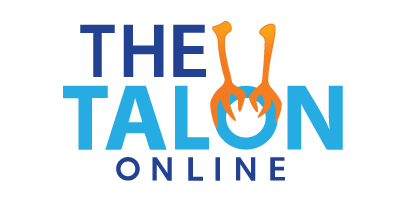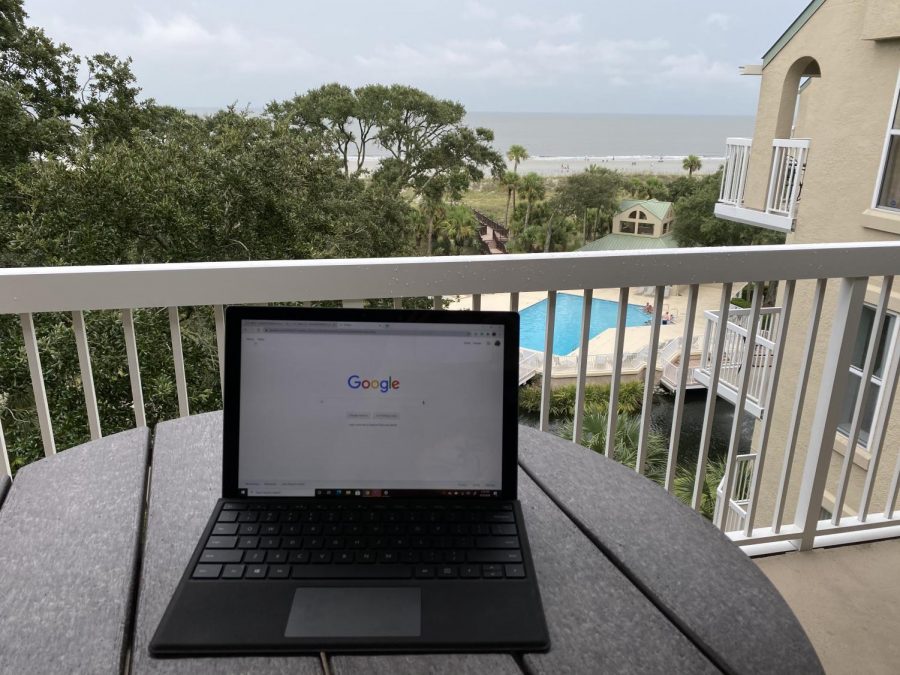RHS staff and students share their opinion on remote learning
September 17, 2020
It’s a calm September morning when one by one, alarms start going off. It’s that time of year: back to school. But instead of heading to the bus stop, students only have to walk a matter of steps before sitting down in front of a screen to begin learning. 2020 is surely a year like no other.
In the midst of a global pandemic, students start the year off in a remote learning environment. However, this is no new challenge, as the 2019-2020 school year ended off in a similar remote learning style. Starting the year off remotely after completing last year with a total of three months online, students are left with mixed feelings.
“I didn’t realize how much I actually enjoyed being in school until remote learning started,” junior Jack Crandall said. “I took for granted being able to see my friends and teachers every day and how amazing our school actually is.”
Senior year is an important year, especially for Kate Breitschuh. Seniors play an important part as role models and contribute to our school spirit. However, under these circumstances, students are unable to participate in normal activities.
“I have definitely had many, many negative thoughts about everything. Whether it be sports, social events, and especially learning, I have thought the worst and just wished it could all be normal,” senior Kate Breitschuh said. “ It still makes me sad to think that my senior year won’t be as expected but I am constantly reassured that everything will work out.”
Learning online is no easy task, and neither is teaching online. Many different teaching departments have had to adapt to the remote curriculum and change their traditional ways of teaching.
“Remote learning is like being a first-year teacher again,” German teacher Mr. Brady Crites said. “All of the lessons and materials that we teachers have compiled over the years are all designed for in-person learning, so it takes a lot of work to transition all of that to an online format.”
Similarly, advanced placement classes are also working strenuously to work with these circumstances. These college-level classes take a lot of commitment and focus, and AP United States History (also known as APUSH) teacher Mr. Chad Zwolinski is putting all of his effort into making his class run as smoothly as possible.
“AP is much tougher because of the gauntlet that is time constraints,” Mr. Z said. “We are losing 2 hours with students a week and I need to be sure I’m not overloading them with homework. But it also means some of our fun, in person, lectures won’t have the same feeling.”
Transitioning to a remote environment for special education students has not been the easiest challenge. However, the loss of face to face teaching has allowed for new learning opportunities for these students.
“If my students don’t have support next to them, it can be difficult prompting them through a screen how to use certain online tools,” special education teacher Ms. Gina Campbell said. “On the plus side, being remote has taught my students many new skills including how to use email, using appropriate language online, and becoming more familiar with technology.”
In a normal setting, gym students would be able to share equipment and play team sports together. Teaching gym online has been one of the biggest changes to a classroom setting there is.
“We have had to be flexible with the activity piece of the curriculum,” gym teacher Mr. Steve Fox said. “It’s hard to play a sport with no equipment or others to play with. Instead, students are having to find activities that they can do on their own such as walking, biking, and jogging.”
Shifting to remote learning hasn’t been an easy transition for all. With busy households, multiple siblings, technology issues, and the need for a quiet workspace, students have had to find ways to navigate through it all.
“I have been able to work at a friend’s house on certain days of the week so that helps me a lot because my house can get pretty crazy,” sophomore Sam Tandy said. “I have a good workspace where I can get out my planner, have my computer open, and have the space for my folder and notebook to be in front of me. However, I feel for all the students who are struggling or don’t have access to all the supplies needed. I know all the teachers and staff just want to see us do well, and they will do everything they can to make sure we succeed.”
Keeping students happy and motivated is the overall goal to help remote learning run smoothly and keep students engaged.
“I believe that attitude is everything, and if we choose to pity ourselves and constantly complain about the current situation, then of course we’re going to feel miserable,” Mr. Crites said. “I’ve tried to create a healthy virtual class atmosphere by prioritizing the wellness and self-esteem of my students just as much, if not more, than their academic achievement.”
Breitschuh is continuing her learning with an optimistic outlook, eager to get back to in-person learning soon.
“If students are able to go back at some point, I am sure that not a second will be wasted and I will maximize every chance I get,” Breitschuh said. “I am hopeful at this point that our current situation won’t affect our whole school year to this extent, and I am so ready to get back into the classroom.”
So much of the Rochester staff takes the time to know their students personally and be able to develop a teacher-student relationship to bond with the class. However, teachers face a new challenge not being able to know their students on a personal level as the year starts.
“It’s been a huge challenge in that making meaningful connections is much tougher; my dad jokes aren’t as funny and finding ways to show each student you notice them is more time-consuming,” Mr. Z said. “We take three breaks each class where I stay on zoom and see if anyone wants to chat. It’s similar to how my classroom looked in the morning when kids just ‘hung out’ so it helps me find out what they like and who they are.”
Developing relationships with students in special education classrooms are just as important, if not more. Being able to have those students see a familiar or reassuring face is very important and without that, it’s been a new challenge.
“Luckily I have a mix of returning students and new students in my classes. With students who are new, the journey to creating a connection with them is definitely slower but I have been able to learn about them in new ways through class activities and assignments,” Ms. Campbell said. “Showing confidence in my teaching and having an optimistic outlook has shown to make my students, both new and returning, feel comfortable in my classroom and give their best effort.”
Being able to communicate with teachers has been a slower, more difficult process remotely. Tandy understands how important it is to have a face to face conversation when possible.
“Remote learning already has made me grateful for the time we got to talk to teachers and ask questions when we were in person,” Tandy said. “I took for granted the fact that I could walk right into the class at any time if I was confused.”
Although some students prefer in-person learning, other students are able to see the benefits of learning remotely.
“It’s easier because everything is online and I can see all my assignments in my [virtual] classroom,” junior Mehr Bangash said.
As changes due to the pandemic occur every day, the district is unsure what plans are going forward. Health and safety have always been prioritized, therefore they are waiting to make the best decision for all families.
“RCS continues to work hard to ensure we are making the current circumstances the best experience for students possible, while also planning for future options,” assistant principal Mr. Josh Wrinkle said.
At the end of the day, teachers want to prioritize wellness for their students and ensure they feel loved and cared for.
“I find myself sending emails with students a lot more, and checking in more often,” Mr. Crites said. “I think that this pandemic has also made us all a bit more empathetic for one another. I suppose shared trauma has a way of bringing people closer together. In many ways I feel that my students and I can be more real or authentic with each other than we ever have been.”



